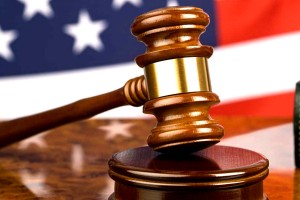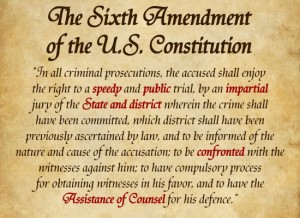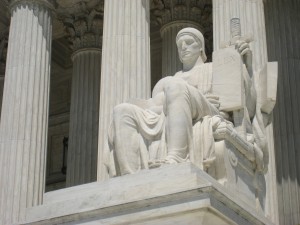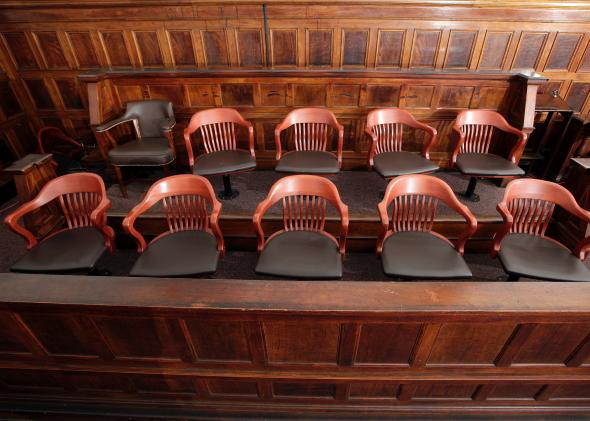JURY ROOM DEMONSTRATIONS: THE CASE OF OFFICER PETER LIANG AND THE JUROR THAT BECAME AN EXPERT WITNESS.
 Last week, a jury convicted Officer Peter Liang of manslaughter in the second degree. One of the jurors spoke out and revealed some interesting and problematic details about the deliberations and the jury room demonstration that took place using Liangs gun. The trial court should conduct a hearing prior to sentencing to determine whether the jury room demonstration was illegally conducted and whether one or more of the jurors became an unauthorized expert witness.
Last week, a jury convicted Officer Peter Liang of manslaughter in the second degree. One of the jurors spoke out and revealed some interesting and problematic details about the deliberations and the jury room demonstration that took place using Liangs gun. The trial court should conduct a hearing prior to sentencing to determine whether the jury room demonstration was illegally conducted and whether one or more of the jurors became an unauthorized expert witness.
Juror number nine stated that a jury room demonstration had taken place where each juror took a turn with the gun to determine how much pressure was necessary to pull the trigger. Although the gun was not loaded for the jury room demonstration, the jury ultimately concluded from this test how much pressure on the trigger was necessary to fire the gun. Juror number nine told the press that he had extensive experience with guns and that it wasnt hard for him to pull the trigger at all. This unsupervised deliberation room experiment with Liangs gun took place outside of the courtroom, outside of the view of the judge, the attorneys, and the defendant.
 In 2014 Officer Peter Liang was on a vertical patrol in the dark stairwell of a high-rise building in New York City. Officer Liang had his gun drawn, but did not have his finger on the trigger. The sound of a slamming door startled him and his gun went off; the bullet ricocheted off a wall and hit Mr. Akai Gurley on the floor below, piercing his heart and killing him. Liang was charged with manslaughter in the second degree and convicted after a trial by jury.
In 2014 Officer Peter Liang was on a vertical patrol in the dark stairwell of a high-rise building in New York City. Officer Liang had his gun drawn, but did not have his finger on the trigger. The sound of a slamming door startled him and his gun went off; the bullet ricocheted off a wall and hit Mr. Akai Gurley on the floor below, piercing his heart and killing him. Liang was charged with manslaughter in the second degree and convicted after a trial by jury.
The seemingly simple out-of-court demonstration violated several important constitutional rights including, the Sixth Amendment right to confrontation, the right to be present at every stage of the proceeding, the right to cross-examine witnesses, and the rule against unsworn witnesses and testimony contributing to a conviction.
The Law On Jury Room Demonstrations:
As a general rule, a jury verdict may not be impeached by proof of the tenor of its deliberations, but it may be upon a showing of improper influence, which includes even well intentioned jury conduct that tends to put the jury in possession of evidence not introduced at trial. People v. Brown, 48 N.Y.2d 388 (1979).
Jurors may conduct a jury room crime reenactment or demonstration provided it involves no more than the jurors application of everyday experiences and common sense regarding the evidence, People v. Gomez, 273 A.D.2d 160, 710 N.Y.2d.53. Conversely, demonstrations that entail more than the application of everyday perceptions and common sense are prohibited. People v. Stanley, 87 N.Y.2d 1000, 1001, 642 N.Y.S.2d 620, 665 N.E.2d 190. In this case the issue of how much pressure was necessary to fire the gun was the topic of expert testimony, as most people do not handle guns on a regular basis and therefore expert opinion was necessary.
The Jury Room Demonstration Violated Important Rights
 The jury room demonstration was illegal evidence and illegally considered by the jury for several reasons: First, the jurors became unsworn witnesses when they took turns pulling the trigger of Officer Liangs gun; they had no basis to determine how and when a bullet would fire from that gun. They were not subject to cross-examination by the attorneys, and the defendant was denied his constitutional right to confront the witnesses against him.?? Second, the defendant was denied the right to be present at a critical stage of the proceeding. Juror number nine claimed that it was on the basis of this experiment that the entire jury concluded that Officer Liang was guilty. This was a critical stage of the proceeding, and the defendant was not present for the jurys review of the most critical piece of evidence. Most importantly, the presentation of this evidence took place outside the presence of the court, the attorneys and the defendant.
The jury room demonstration was illegal evidence and illegally considered by the jury for several reasons: First, the jurors became unsworn witnesses when they took turns pulling the trigger of Officer Liangs gun; they had no basis to determine how and when a bullet would fire from that gun. They were not subject to cross-examination by the attorneys, and the defendant was denied his constitutional right to confront the witnesses against him.?? Second, the defendant was denied the right to be present at a critical stage of the proceeding. Juror number nine claimed that it was on the basis of this experiment that the entire jury concluded that Officer Liang was guilty. This was a critical stage of the proceeding, and the defendant was not present for the jurys review of the most critical piece of evidence. Most importantly, the presentation of this evidence took place outside the presence of the court, the attorneys and the defendant.
The Sixth Amendment made applicable through the Due Process Clause of the Fourteenth Amendment guarantees that the accused shall enjoy the right to a trial by jury and be confronted with the witnesses against him. The evidence developed against a Defendant must come from the witness stand in a public courtroom where there is full judicial protection of the Defendants right of confrontation, the right of cross-examination, and the right to counsel.
The jurors became unsworn witnesses and, in the case of juror number 9, possibly an expert witness. The deliberation room demonstration allowed the jury to rely on evidence from outside the courtroom, unsupervised by a judge, and not subject to the rules of evidence. Most importantly, Officer Liang was denied his Sixth Amendment right to cross-examine the newly unsworn witnesses.
In addition to denying Officer Liangs right to confrontation, the jury room demonstration denied Officer Liang the right to be present at a material stage of the trial. This right is rooted in both constitutional principle and statute, U.S. Const., 6th Amend.; N.Y. Const., art. 1, & 6; CPL 310.30. Thus, a violation of a defendant’s right to be present at a critical stage of the proceedings presents an issue of law, even in the absence of objection, and harmless error analysis is not available for such a violation. People v Mehmedi, 69 NY2d 759, 760 (1987).
 Firearms Expert Necessary To Interpret The Type Of Experiment Enacted By The Jurors
Firearms Expert Necessary To Interpret The Type Of Experiment Enacted By The Jurors
The jurors unsupervised experiment begs several questions that can only be answered by an experienced firearms expert: when does the bullet fire from the gun? When the trigger is pulled all the way? Half of the way? Or just part of the way? Does the trigger pull differently when there are no bullets in the gun as opposed to when it is loaded? (assuming that the jurors were not firing live ammunition in the deliberation room); Did the jurors come to independent conclusions or was there discussion amongst them about their experience with this gun or with guns in general?
Did Juror Number Nine Become An Expert Witness?
Even more disturbing than the ad hoc experiment in this case is Juror nines claim that he has had extensive experience with guns and that it was easy to pull the trigger. This is probably the most important and disturbing element of the case where this juror potentially became an expert witness in the jury room. Did Juror nine tell other jurors about his expertise and his opinions? Did the other jurors heed and rely on Juror nines expertise? Did any of the other jurors have experience with guns that was relied on in the jurys decision?
These are important questions that the trial court needs to explore in a post-conviction and pre-sentence hearing to determine if the jury deliberations were illegally affected by the jury room demonstration and the possible juror turned expert.
